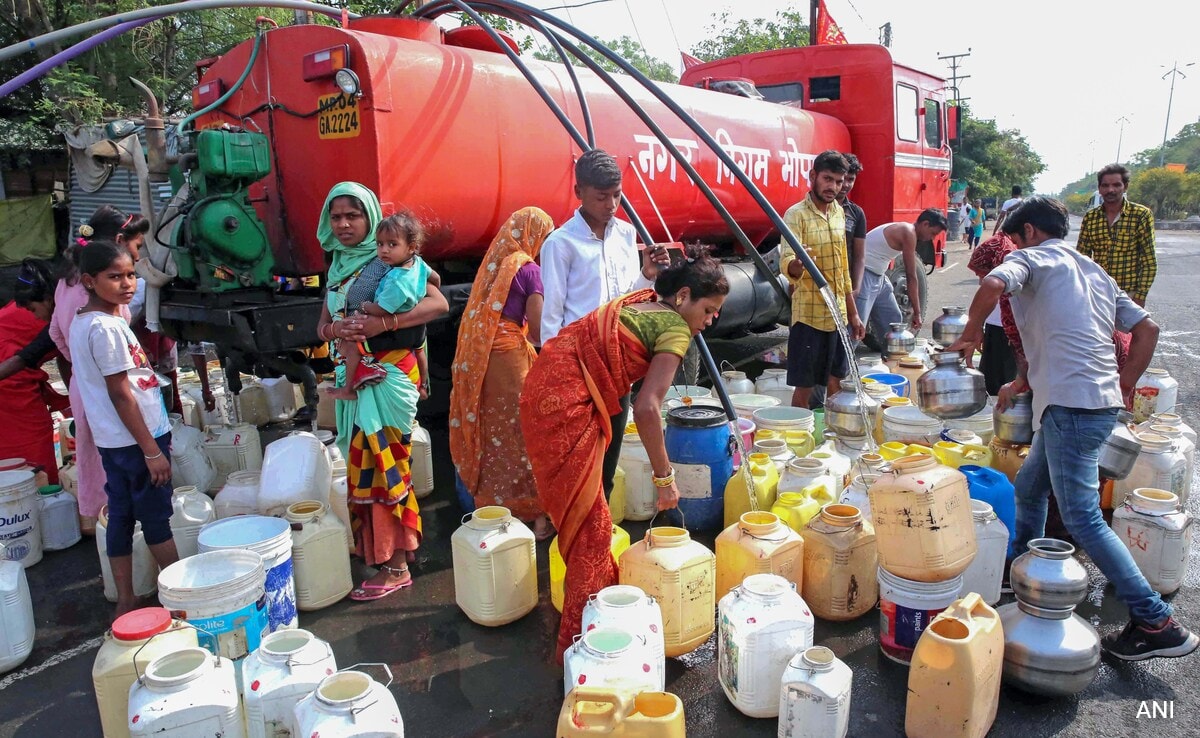2024-03-22 11:53:48

India stares at a water crisis as storage capacity in reservoirs stands at just 38% ahead of summer
New Delhi:
Ahead of the summer season, the live storage capacity in India’s 150 primary reservoirs stands at just 38 per cent of their total capacity, which is less than the last decade’s average for the same period, according to data.
Cities like Bengaluru are already grappling with a shortfall of around 500 million litres of water per day (MLD), against a demand of 2,600 MLD.
Karnataka, among other states, registered lower storage levels compared to the same period last year, according to the weekly bulletin by the Central Water Commission.
Bengaluru hosts 14,000 borewells with 6,900 of them having dried up. Water bodies have either been encroached upon or have dried up. The city requires 2,600 MLD of water, out of which 1,470 MLD is sourced from the Cauvery River and 650 MLD from borewells, Karnataka CM Siddaramaiah had told reporters.
Several other states, including Himachal Pradesh, Punjab, Madhya Pradesh, Tripura, Rajasthan, Bihar, Maharashtra, Uttar Pradesh, Gujarat, Chhattisgarh, Andhra Pradesh and Telangana (two combined projects in both states), and Tamil Nadu, also reported lower storage levels compared to last year.
The total live storage capacity of these 150 reservoirs is 178.784 BCM, which accounts for about 69.35 per cent of the nation’s total live storage capacity estimated at 257.812 billion cubic metres, according to official data.
According to the reservoir storage bulletin on Thursday, the live storage available in these reservoirs is 67.591 BCM, representing 38 per cent of their total live storage capacity.
However, during the corresponding period last year, the live storage available was 80.557 BCM, with an average of 72.396 BCM over the past decade.
Thus, the current live storage in these 150 reservoirs amounts to 84 per cent of the storage during the same period last year and 93 per cent of the average storage over the past decade.
“The overall storage position in the country is lower than the corresponding period last year and also falls short of the average storage over the past ten years for the same period,” stated the bulletin.
The Southern region, which includes states like Andhra Pradesh and Telangana (two combined projects in both states), Karnataka, Kerala, and Tamil Nadu, monitors 42 reservoirs with a total live storage capacity of 53.334 BCM.
As of the Reservoir Storage Bulletin dated 21.03.2024, the total live storage available in these reservoirs is 12.287 BCM, which constitutes 23 per cent of their total live storage capacity.
This marks a decrease compared to the storage levels during the corresponding period last year (39 per cent) and the average storage over the past ten years (32 per cent).
Thus, the current storage levels in the Southern region are lower than those observed during the same period last year and also fall below the average storage over the past ten years.
(Except for the headline, this story has not been edited by NDTV staff and is published from a syndicated feed.)
Water Storage India,Water Shortage India,Water in India's Reservoirs
Source link
![]()
